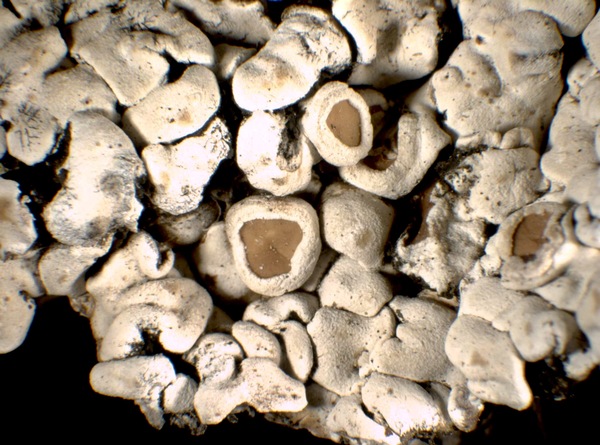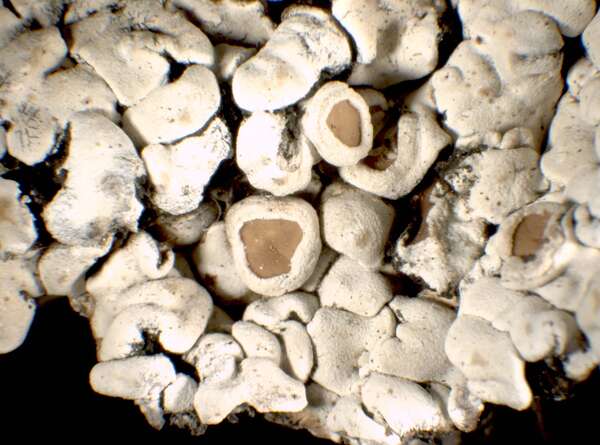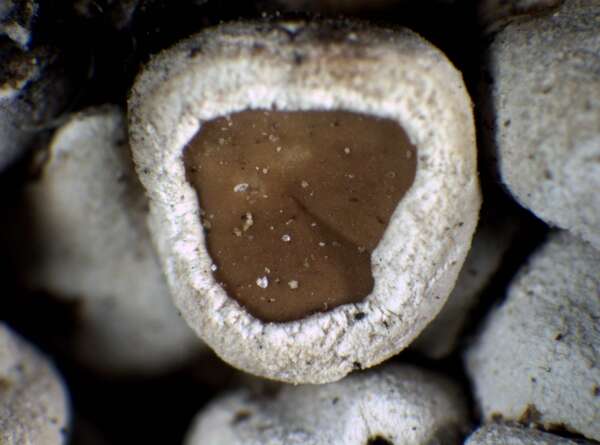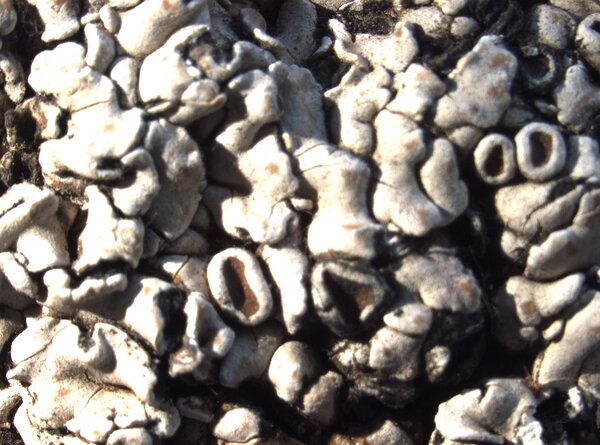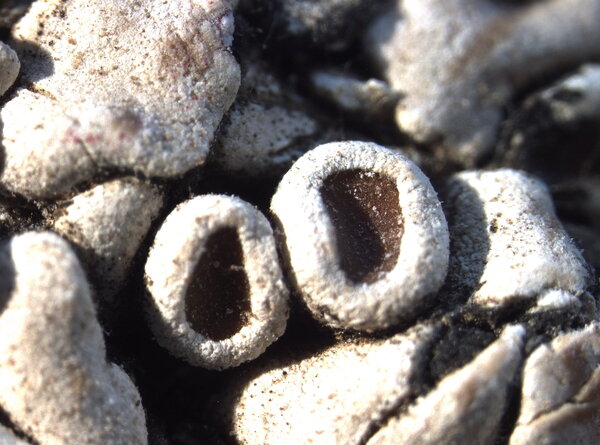Squamarina stella-petraea Poelt
Mitt. bot. Staatss. München, 2: 540, 1958.
Synonyms:
Distribution: N - Lomb (Ravera & al. 2018), Piem (TSB 25900), Emil (Fariselli & al. 2020), Lig (Valcuvia & al. 2000). C - Marc (Nimis & Tretiach 1999), Umb (Nimis & Tretiach 1999, Ravera & al. 2006), Laz (Nimis & Tretiach 2004, Di Pietro & al. 2022), Abr (Nimis & Tretiach 1999, Gheza & al. 2021), Mol (Nimis & Tretiach 1999, Caporale & al. 2008), Sar. S - Camp (Garofalo & al. 1999, Aprile & al. 2003b, Nimis & Tretiach 2004), Pugl (Nimis & Tretiach 1999), Bas (Nimis & Tretiach 1999), Cal (Puntillo 1996), Si.
Description: Thallus squamulose, densely white-pruinose, areolate in the centre, with elongated lobes at the margin, thick, forming regular rosettes when young. Squamules (2-)3-4 mm broad, flattened, smooth, the central ones almost subcrustose, the marginal ones often elongate, the edges usually not up-turned and usually not overlapping (contrary to strongly pruinose forms of S. cartilaginea). Upper cortex paraplectenchymatous, well delimited against the thick, white medulla. Apothecia lecanorine/zeorine, rounded, sessile and strongly constricted at base, up to 5 mm across, with a reddish brown, smooth disc, and a thick, smooth, sometimes finally excluded thalline margin. Epithecium brownish; hymenium colourless, I+ blue; paraphyses slightly thickened above; hypothecium colourless. Asci 8-spored, clavate to cylindrical-clavate, the apical dome K/I+ dark blue, the wall I-, but the thin outer gel I+ blue, Bacidia-type. Ascospores 1-celled, hyaline, ellipsoid, 9-13(-16) x (3-)4-7 µm, thin-walled. Pycnidia dark, immersed in the squamules. Conidia filiform. Photobiont chlorococcoid. Spot tests: thallus K-, C-, KC- or KC+ yellowish-, P-, UV-; medulla P+ yellow. Chemistry: cortex with usnic acid, medulla with psoromic acid.Note: a mainly Mediterranean species with outposts in dry-warm areas of the submediterranean belt, found on calcareous rocks or on thin soil layers in dry grasslands; overlooked or confused with S. cartilaginea in the past, but locally abundant, especially in Southern Italy.
Growth form: Squamulose
Substrata: rocks, soil, terricolous mosses, and plant debris
Photobiont: green algae other than Trentepohlia
Reproductive strategy: mainly sexual
Commonnes-rarity: (info)
Alpine belt: absent
Subalpine belt: absent
Oromediterranean belt: absent
Montane belt: very rare
Submediterranean belt: rare
Padanian area: absent
Humid submediterranean belt: rather rare
Humid mediterranean belt: rather common
Dry mediterranean belt: common
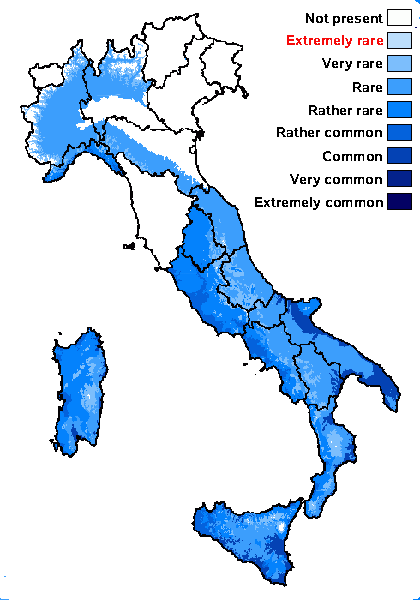
Predictive model
Herbarium samples
Growth form: Squamulose
Substrata: rocks, soil, terricolous mosses, and plant debris
Photobiont: green algae other than Trentepohlia
Reproductive strategy: mainly sexual
Commonnes-rarity: (info)
Alpine belt: absent
Subalpine belt: absent
Oromediterranean belt: absent
Montane belt: very rare
Submediterranean belt: rare
Padanian area: absent
Humid submediterranean belt: rather rare
Humid mediterranean belt: rather common
Dry mediterranean belt: common

Predictive model
| Herbarium samples |
 Index Fungorum
Index Fungorum
 GBIF
GBIF
